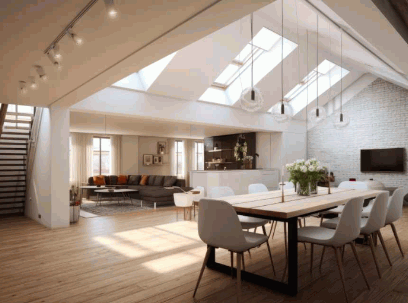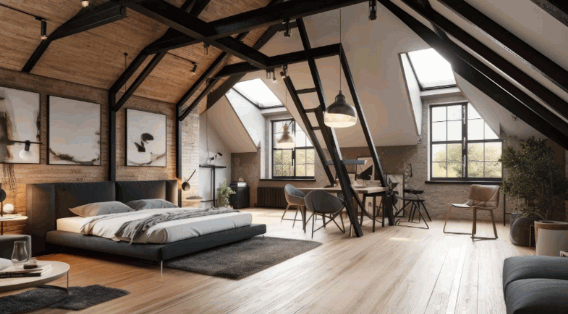
Are you looking to maximize your home's potential? A loft conversion might be the answer. This popular home improvement transforms unused attic or roof space into functional living areas such as a home office or loft room, but is it suitable for every house?
We will explore the essentials of loft conversions, including types, benefits, estimated costs, and the necessary steps to make your vision a reality. We will also address common challenges you might face, such as planning permission requirements and fire regulations.
Get ready to unlock the full potential of your home with expert advice from architectural technicians and construction managers!
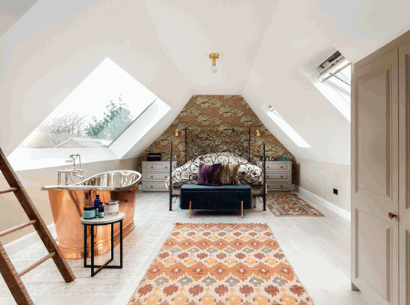
Table of Contents
A loft conversion is a transformative process that allows homeowners to maximize their property’s potential by converting unused roof space into functional living areas. This can include creating additional bedrooms, a home office, or even a home cinema, significantly enhancing the overall utility and value of the home. The process involves various considerations, such as the existing roof structure, planning permission, building regulations, traditional and modern trussed roofs, and fire safety to ensure proper headroom. Understanding these facets is essential for anyone considering a loft conversion as part of their property refurbishment or home extension project, ensuring adherence to council guidelines.
Delve into: How Long Does It Take To Build A Loft Conversion
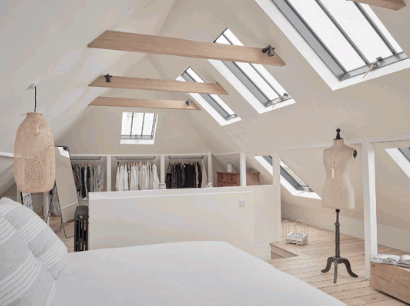
Not every house is suitable for a loft conversion; however, many property types, including terraced, semi-detached homes, and bungalows, can benefit from this type of construction project under the right circumstances. Factors such as the existing roof structure, available headroom, building foundations, and adherence to building regulations significantly influence the feasibility of a loft conversion, including considerations for party wall agreements. Additionally, understanding local authority requirements and the possibility of permitted development can streamline the planning application process, making it easier for homeowners to realize their vision of enhanced living space.
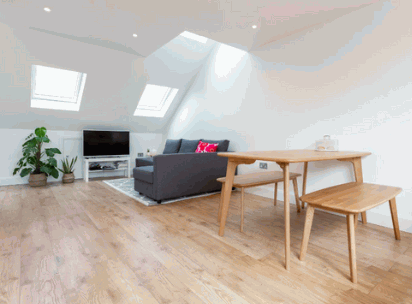
The requirements for a loft conversion encompass a variety of factors, including obtaining planning permission and planning consent and adhering to stringent building regulations that ensure safety and functionality. Compliance with fire safety regulations and proper insulation are also critical components. Homeowners must evaluate their existing headroom and any necessary structural changes to accommodate features like loft stairs, external escape stairs, and insulation. Fire regulations play a critical role in ensuring occupant safety, necessitating thorough consultations with architectural technicians and construction managers to navigate these complexities effectively, especially in residential projects.
To embark on a successful loft conversion, it is essential to understand the intricate landscape of regulations and planning applications involved. Compliance with building regulations is not just a formality; it is a safety net that protects both property and residents. Homeowners should:
By prioritizing these elements, homeowners can not only simplify the approval process but also secure their investment in the long run. Proper guidance from seasoned experts can significantly mitigate potential risks and ensure that the final outcome is both safe and aesthetically pleasing.
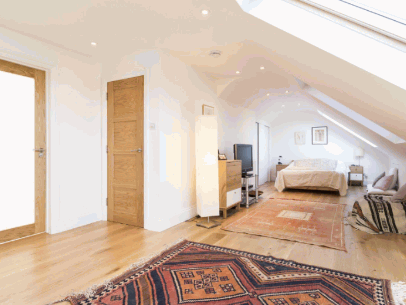
There are several types of loft conversions available, each offering unique advantages depending on the property and desired outcome. The most popular options include dormer conversions, which extend out from the existing roof space, mansard loft conversions characterized by a flat roof and steep sides, hip-to-gable conversions that transform sloping roofs into vertical walls, and roof light conversions that utilize existing roof structures with minimal alteration. Understanding these types allows homeowners to derive design inspiration that complements their property’s aesthetics while maximizing usable loft space.
A dormer loft conversion is one of the most popular choices for homeowners seeking to increase their living space effectively and efficiently. This type of conversion involves extending the existing roof structure to create additional headroom and floor area, allowing for functional rooms such as bedrooms or an office. It typically complies with building regulations, making it a cost-effective solution for maximizing loft space while enhancing property value.
With a variety of designs, such as gable, hip-to-gable, and flat-roof dormers, homeowners can select an option that best suits their architectural style and personal preferences.
Another significant benefit is that dormer conversions can often be completed without the need for extensive planning permission, aligning with local building regulations while enhancing the overall design and architectural value of the home. Consideration of factors like natural light and aesthetics further plays a vital role in executing a successful dormer loft transformation.
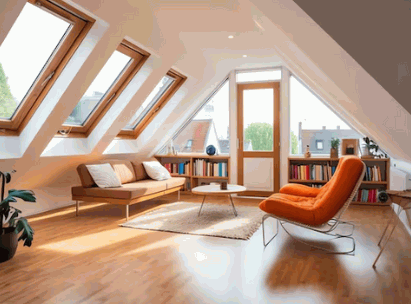
The mansard loft conversion is characterized by its distinctive flat roof and steep sides, offering the greatest potential for maximizing usable loft space. This style of conversion often requires significant structural changes and adherence to stringent building regulations, but it provides ample headroom and the opportunity to create multiple rooms within the loft area, making it an attractive option for homeowners looking to expand their living space.
Plus enhancing functionality, this conversion style significantly influences the overall aesthetics of the property, giving it a modern touch while also increasing its historical charm.
Homeowners should consider the following aspects of construction and design:
By weighing these factors, individuals can effectively enrich their living environment while ensuring long-term value appreciation.
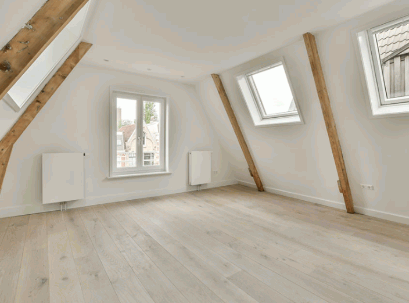
A hip-to-gable loft conversion involves converting the sloping roof of a hip-ended property into a vertical gable wall, significantly increasing the available headroom and floor area. This type of conversion is particularly beneficial for semi-detached homes and bungalows and often adheres to building regulations, allowing homeowners to maximize their existing roof space while enhancing the overall design and functionality of their property.
This architectural transformation not only opens up new possibilities for room design but also plays a crucial role in creating additional living space. By efficiently utilizing the loft area, homeowners can add rooms such as a bedroom, office, or playroom, which can greatly enhance their quality of life. One must also consider several factors:
Ultimately, a hip-to-gable conversion not only maximizes space but also uniquely elevates the home’s value and functionality.
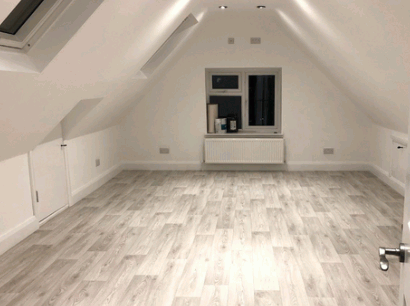
A roof light conversion is the least invasive type of loft conversion, utilizing the existing roof structure to create new living space with minimal alteration. This approach focuses on installing roof lights to enhance natural light and ventilation in the loft area, making it an excellent option for homeowners seeking to create a home office or additional bedrooms without extensive construction work.
These conversions offer several advantages that appeal to many, such as quicker installation times, cost-effective building works, and reduced costs compared to traditional loft conversions. Homeowners can enjoy better energy efficiency, as the introduction of roof lights allows for natural sunlight to reduce reliance on artificial lighting.
While rooflight conversions can significantly enhance underutilized loft spaces, careful consideration of these factors, including gross floor area and overall design, is essential for a successful outcome.
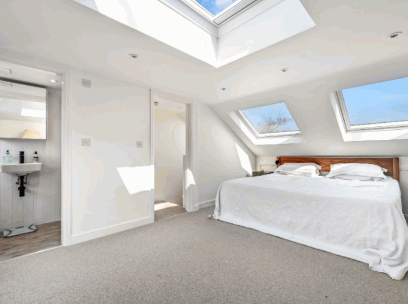
Loft conversions can substantially increase home value, maximize living space, and provide design inspiration for future home extensions. They are a cost-effective solution to enhance existing properties and create additional rooms without the need for extensive foundation work. A loft conversion offers numerous benefits that make it an appealing option for homeowners looking to enhance their property. Primarily, it increases living space, providing additional rooms such as bedrooms, home offices, or a home cinema, without the need for moving or building extensions. Additionally, a well-executed loft conversion can significantly add value to the property, often making it a cost-effective alternative to relocating. The customizable design allows homeowners to tailor the space to their specific needs and preferences, ensuring that the final result is both functional and aesthetically pleasing.
One of the primary advantages of a loft conversion is its ability to significantly increase the living space of a property without the need for extensive building works or moving. By transforming unused loft space into functional areas, homeowners can create additional rooms that cater to their specific needs, such as a home office, gym, or guest bedroom, enhancing the overall usability of the home.
This innovative approach not only maximizes space but can also introduce a unique charm to your property. For instance, a converted loft can become a cozy library, filled with natural light from skylights, ideal for curling up with a book. Alternatively, consider creating a stylish studio for artistic pursuits, featuring an open layout that encourages creativity. A traditional roof design can enhance the aesthetic appeal, providing a classic touch to your new space.
When designing the conversion, think about incorporating smart storage solutions and choosing a color palette that complements the home. Consider how the loft's height can be optimized to create an airy and spacious feel. This way, the space not only looks appealing but functions smoothly, leaving a lasting impression.
Investing in a loft conversion can lead to a substantial increase in the home valuation, making it a wise financial decision for many property owners. Statistics show that adding an additional bedroom or living area through a loft conversion can result in a significant return on investment, effectively boosting the property value and enhancing its appeal to potential buyers.
In fact, recent studies indicate that homeowners can expect a return of up to 20% on their investment after completing such a project. For instance, a case study conducted in London revealed that a $30,000 loft conversion increased a property's value by an impressive $60,000. This not only illustrates the lucrative potential of loft conversions but also signifies their role in attracting a wider range of potential buyers.
These projects not only provide valuable extra space but also represent a savvy investment opportunity for homeowners looking to maximize their return when it comes time to sell.
Choosing a loft conversion can be a cost-effective alternative to moving, allowing homeowners to enhance their living space without the expenses associated with buying a new property. Loft conversions typically cost less than relocating and come with the added benefit of increasing property value, providing a double advantage for those considering a change.
This option allows individuals to remain in their cherished neighborhoods, which can be an emotional and financial boon.
When evaluating costs, a loft conversion generally ranges between $20,000 to $50,000, while moving can rack up expenses exceeding $100,000 when considering agent fees, stamp duty, and renovations in a new home.
To illustrate further, a comparison of typical costs is outlined below:
By choosing to enhance their current living situation, homeowners can not only save significant amounts but also avoid the stress associated with relocating, making this an increasingly attractive option.
A significant benefit of loft conversions is the customizable design that allows homeowners to create a space tailored to their unique needs and preferences. Whether it’s designing a tranquil home office, a vibrant playroom, or a cozy home cinema, the flexibility in layout and aesthetics provides ample opportunities for personal expression and functional design.
Homeowners can choose from a myriad of design options, including skylights that maximize natural light or built-in storage solutions that enhance organization.
It’s essential to understand the importance of planning applications and compliance with building regulations, ensuring that the transformation not only meets aesthetic desires but also adheres to safety standards. Taking the time to plan effectively can result in a space that is not only welcoming but also structurally sound.
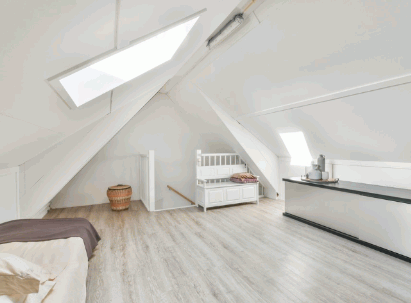
Successfully completing a loft conversion involves a series of well-defined steps that guide homeowners from initial consultation to final finishing touches. The process begins with a thorough consultation with architectural technicians and a construction manager to discuss design inspiration and assess the existing roof and structural needs. Following this, obtaining the necessary planning permission and compliance with building regulations is crucial before moving on to the construction process, where structural changes and installations take place, culminating in the finishing touches that bring the new loft room to life.
The initial consultation and planning stage is critical for a successful loft conversion, as it sets the foundation for the entire project. Homeowners should meet with architectural technicians to discuss their aspirations and assess the existing roof conditions, ensuring that the design meets both their needs and the requirements of local building regulations. This phase also involves preparing the necessary planning application to obtain council approval, which can significantly influence the project timeline and outcome.
During this phase, it’s essential for homeowners to gather professional advice that is tailored to their specific situation. They should prepare by collecting relevant documentation such as:
Discussing key considerations like budget, design preferences, and compliance with regulations cannot be overstated. A clear understanding of financial limits will guide the scale of the project, while adherence to safety codes will prevent future complications. Seek professional advice to make informed decisions about converting existing bedrooms into functional loft spaces.
Ultimately, engaging in this thorough consultation process fosters a collaborative atmosphere, paving the way for a smooth and successful loft conversion.
Obtaining the necessary permits is a crucial step in the loft conversion process, as it ensures that all construction complies with local authority regulations and building standards. Homeowners must determine whether their project requires formal planning permission or if it falls under permitted development rules, which can streamline the approval process. Engaging with local authorities early in the planning phase can help clarify requirements and avoid potential delays.
Understanding these regulations can be challenging, as different areas may have specific guidelines affecting the type of loft conversion allowed. For example, most loft conversions qualified under permitted development do not require planning permission, provided that certain conditions are met, such as the volume limit and design compatibility with the existing structure and existing bedrooms.
If the proposed changes are extensive or alter how the property interacts with its environment, formal planning permission may be mandatory.
Effective communication with local authorities is key to navigating this complex system. Here are some strategies:
The construction process of loft conversion is where the initial design takes physical form, involving structural changes to the existing roof and the implementation of new installations to create functional living space. Collaboration with a construction manager is essential during this phase to ensure compliance with building regulations and to oversee the various aspects of construction, including insulation, roofing, and fire safety measures.
Throughout this transformative journey, several key stages unfold that require meticulous attention to detail. Firstly, structural modifications are executed to support the new living area, ensuring that the existing framework can accommodate the added weight and design specifications.
Following this, the installation of loft stairs becomes necessary, providing safe and accessible entry to the new loft space. It’s worth noting that during each step, maintaining compliance with safety standards is non-negotiable. Ongoing communication between the homeowner and the construction team is vital. Regular updates can facilitate the smooth navigation of potential obstacles while fostering a collaborative environment.
Essential aspects to keep in mind include:
Ultimately, a successful loft conversion hinges on these interactions, leading to a well-executed and satisfying outcome for all parties involved, enhancing the loft's usability and value.
The finishing touches of a loft conversion play a pivotal role in transforming the raw space into a beautifully designed area that complements the overall aesthetic of the home. Carefully selected fixtures, fittings, and decor can add significant value to the property, making it essential for homeowners to seek design inspiration that aligns with their personal style and functional requirements.
By considering a cohesive color scheme, choosing appropriate furniture, and incorporating effective lighting, the final look can reflect both elegance and comfort.
These design elements not only beautify the space but can also positively influence home valuation, resulting in a well-rounded and appealing ambiance that welcomes everyone.
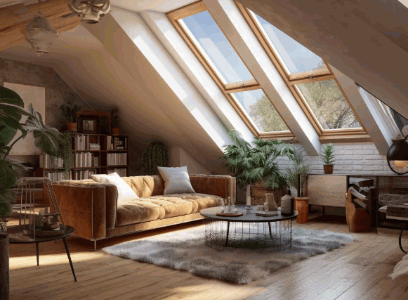
While loft conversions can significantly enhance a property's value and functionality, they often come with common challenges that homeowners should be aware of. Issues such as limited headroom can restrict the usability of the newly created space, while structural issues may necessitate unanticipated changes and additional costs. Furthermore, compliance with fire regulations is paramount to ensure safety and access difficulties can complicate the construction process, underscoring the necessity for thorough planning and professional guidance.
Limited headroom is one of the most common challenges faced during a loft conversion, as it can restrict the functionality and comfort of the new living space. Building regulations often dictate minimum height requirements, and if the existing structure does not meet these standards, it may necessitate additional structural changes, impacting both time and costs. Homeowners should seek design inspiration for the loft that accommodates these limitations while maximizing the use of available space.
To navigate the constraints of limited headroom effectively, several strategies can be employed. First, consider incorporating sloping ceilings into the design, which can create an illusion of space while adhering to regulations. Using built-in furniture can optimize the layout, allowing for more floor area to be utilized creatively.
Before moving forward, it’s critical to consult with professionals who understand local building codes. This not only ensures compliance but also helps identify any potential structural reinforcements that may be required.
Structural issues can pose significant challenges in the loft conversion process, often arising from the existing roof design or the need for additional support to accommodate new loads. It's essential to consult with a construction manager and other professionals to identify these issues early on and ensure that all modifications comply with building regulations, safeguarding the integrity of the home and the safety of its occupants.
In this context, conducting a thorough structural assessment before beginning any construction is critical. It allows homeowners to uncover potential pitfalls that could lead to costly delays or safety hazards. Common challenges may include:
Seeking professional advice not only aids in addressing these challenges but also ensures that the project is executed efficiently. Engaging experts can significantly reduce risks associated with structural complications, ultimately making the conversion not just viable but successful.
Insufficient natural light can significantly impact the overall ambiance and functionality of a loft conversion, often leading to dark, uninviting spaces. Homeowners can address this challenge by incorporating roof lights or skylights during the design phase, which can enhance the interior with natural illumination while maintaining compliance with building regulations.
To effectively harness the benefits of natural light, careful planning, and strategic window placement are essential. One effective approach is to install larger windows or floor-to-ceiling glass panels that not only flood the area with sunshine but also create the illusion of a more spacious environment. Considering light-colored walls and reflective surfaces can further amplify the brightness.
Design inspiration may also include angular roof designs that accommodate more windows, providing a dramatic visual effect while significantly increasing the amount of light. Engaging with professionals who specialize in loft conversions can ensure that the project meets both aesthetic desires and functional needs, making the loft a harmonious part of the home.
Access difficulties can be a significant hurdle in loft conversions, particularly regarding the installation of loft stairs that comply with building regulations while ensuring convenience and safety. Homeowners must consider the best location for staircases and how to integrate them into the existing layout without compromising the overall design and functionality of the living space.
To effectively tackle these challenges, individuals may explore various
that not only meet safety standards but also enhance the aesthetic appeal of the home. Proper planning is essential, as it can substantially influence the overall flow and usability of the loft conversion. Engaging with a professional can provide valuable insights into creating a harmonious balance between accessibility and architectural style.
By prioritizing these elements, homeowners can ensure that their loft enhancement project adheres to regulations while fostering a welcoming atmosphere throughout the living area.
